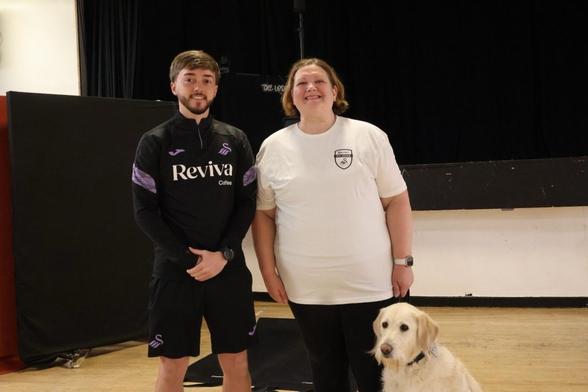**The Future of Mobility: Glide, Guide Dogs, and the Question of Choice**
As technology advances, questions arise about how new innovations like Glide might reshape traditional solutions such as guide dogs. If Glide proves as effective as a guide dog in navigation and mobility, could society decide the massive cost of maintaining guide dogs is no longer justified? While this scenario might seem logical on paper, it introduces a complex mix of ethical, practical, and financial considerations.
### Ethical and Social Considerations
Guide dogs are more than mobility aids. They are companions, confidants, and symbols of independence for many blind people. Forcing a shift to technology alone would overlook the emotional bond and trust that a living animal provides. This raises an important question: would blind people who still prefer guide dogs face societal pressure to "settle" for a pet dog instead? The emotional significance of guide dogs must be acknowledged and respected.
Moreover, guide dogs play a cultural role in how blindness is perceived. Their presence in public settings symbolizes independence and confidence. Phasing them out entirely might unintentionally alter how disability is viewed and supported. Choice is crucial. Society should aim to expand options, not restrict them. Glide’s arrival should be about complementing existing aids, not replacing them wholesale.
### Practical Challenges
While Glide holds promise, it’s unlikely to replicate every function of a guide dog at first. Emotional support is irreplaceable, and some individuals may feel more secure with a living companion. Additionally, complex navigation scenarios—such as crowded train platforms or unpredictable outdoor environments—might still favour a guide dog over technology in the early years.
For Glide to justify a significant societal shift, it must not only match but exceed the reliability and versatility of guide dogs. It also needs to be affordable, widely available, and supported by robust infrastructure. Accessibility is key; society must ensure Glide is as universally viable as traditional solutions.
### Financial Realities
Guide dogs cost about £30,000 per year per working dog, amounting to £120 million annually in the UK for 4,000 dogs. While this investment transforms a relative handful of lives, it’s clear that not all blind people can access or afford a guide dog. Glide could offer a scalable, cost-effective solution, making advanced mobility aids more widely available.
However, transitioning entirely to technology comes with upfront costs, including research, production, and training. Reallocating funds away from guide dogs could alienate those who depend on them, making it essential to strike a balance. Glide’s success should not come at the expense of the emotional and practical needs of existing guide dog users.
### Preserving Choice
The future of mobility should focus on providing blind people with a "toolbox" of options: cane, guide dog, or Glide. Each person’s needs, preferences, and circumstances are unique, and society must ensure that no one feels forced to compromise their independence or well-being.
This isn’t about replacing tradition with technology but about broadening horizons. Glide could revolutionize mobility, but its true success will lie in complementing—not eliminating—the trusted solutions that have empowered blind people for decades. Let’s embrace evolution, not impose it.
#Accessibility #AI #Blind #Disability #Glide #Glidance #GuideDogs




